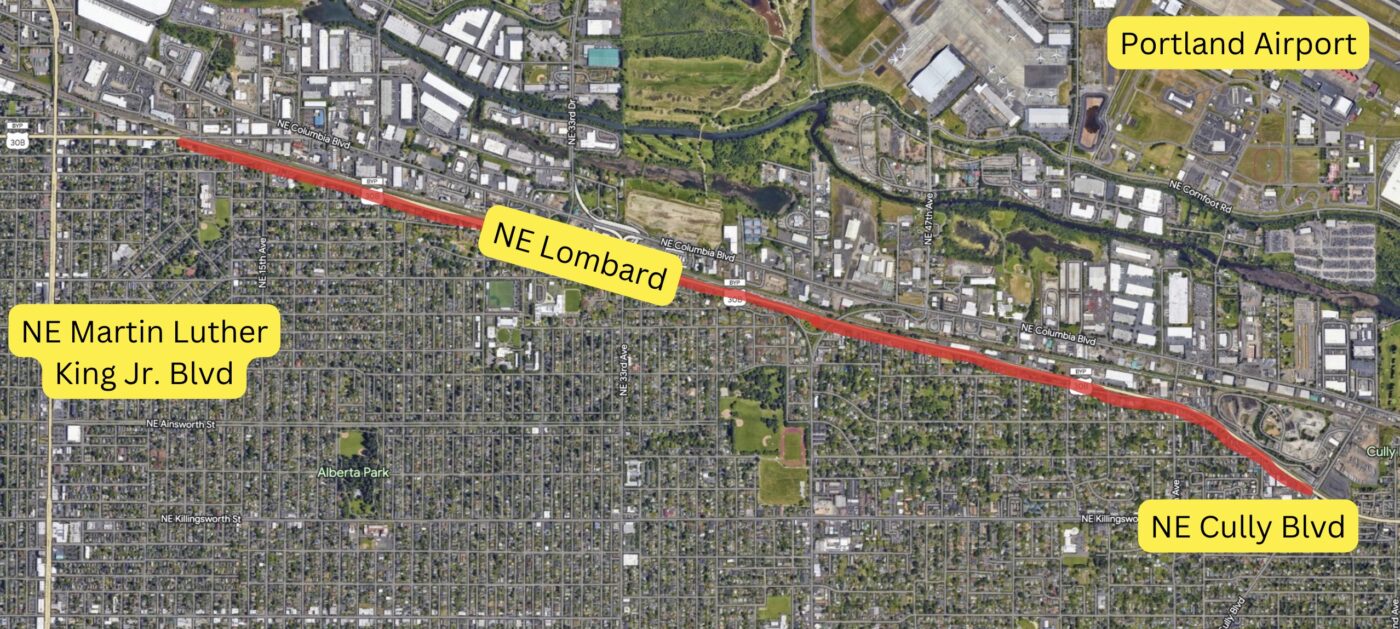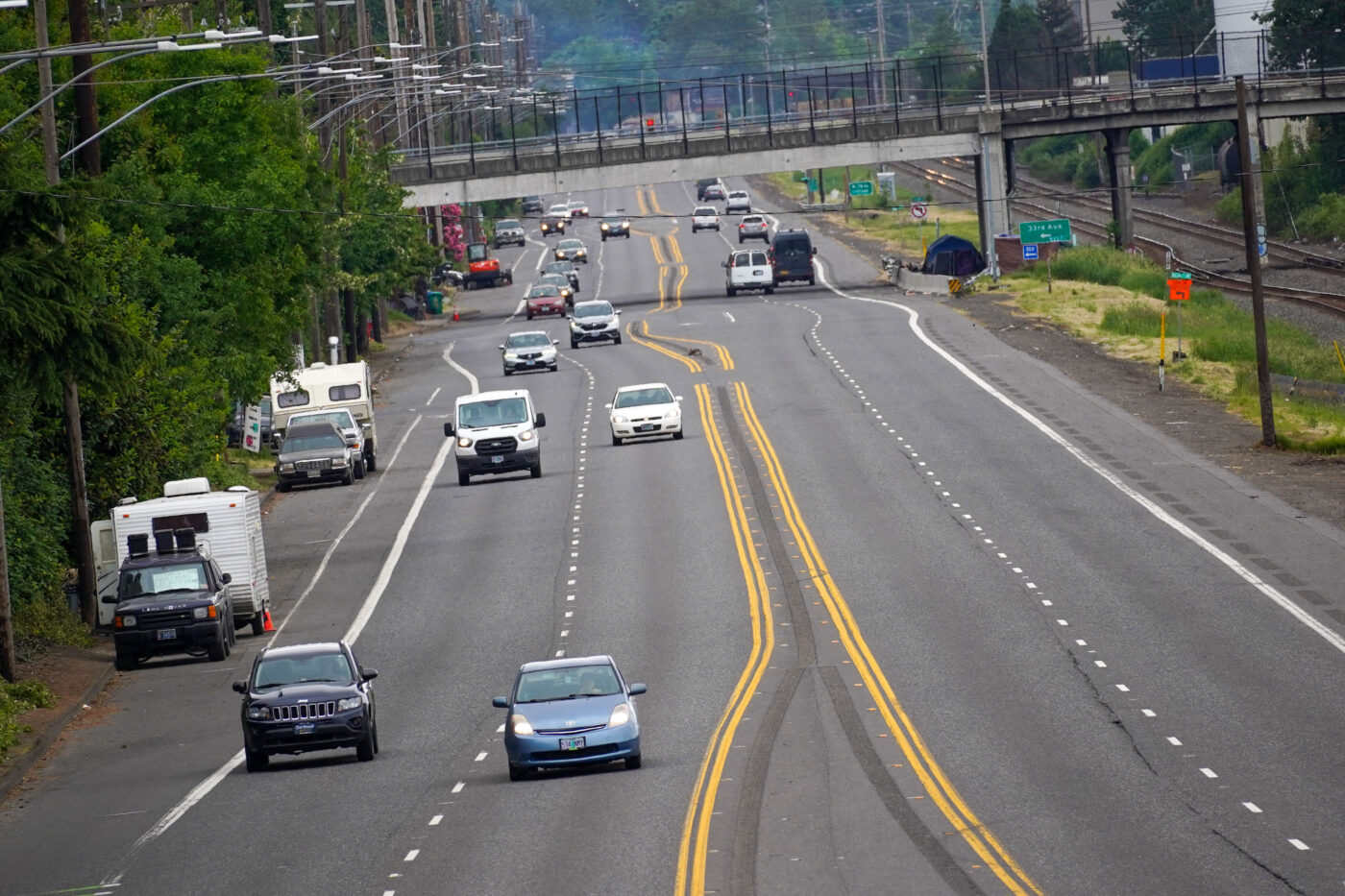
If Portland ever wants to move the needle toward bicycle use, we must build more high-quality bikeways on major streets. There’s been one segment of one of these streets that I’ve had my eyes on for many years and I finally spent a bit of time taking a closer look.
I’m talking about Northeast Lombard east of Martin Luther King Jr. Blvd. It’s a 62-foot (plus or minus) expanse of pavement at the very northern edge of Portland’s residential grid that separates thousands of homes from industrial jobs and natural areas along the Columbia River and slough. With its 45 mph speed limit (and a typical speed well over 50) and average daily traffic count of 29,000 cars — the section of Lombard between NE 11th and Cully Blvd/72nd Ave (and beyond) is a classic “stroad.” In many ways it looks and feels like a freeway, but with its cross traffic, driveways, bike lanes, and proximity to the neighborhood, it also functions like a street.
Despite all this space, the street currently has just very narrow (five feet or so), unpainted and unprotected bike lanes. The cross-section includes four general purpose lanes (two in each direction), bike lanes on both sides, and a lane used for parking cars on the south side. That’s about 52 feet for driving cars and just 10 feet for riding bikes — and most of the time that biking space is filled with gravel, partially blocked by parked cars and RVs, or littered with driving detritus.
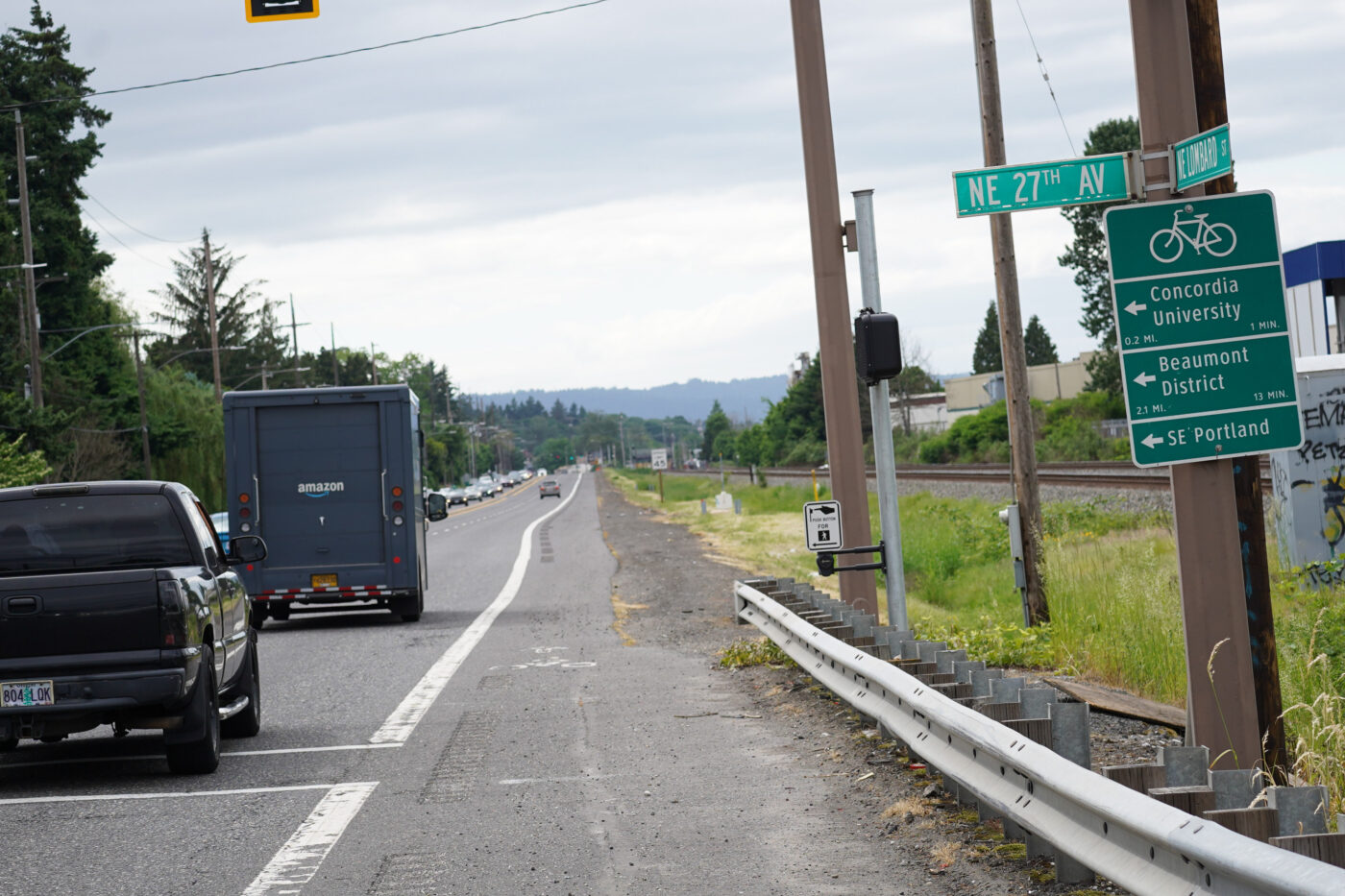

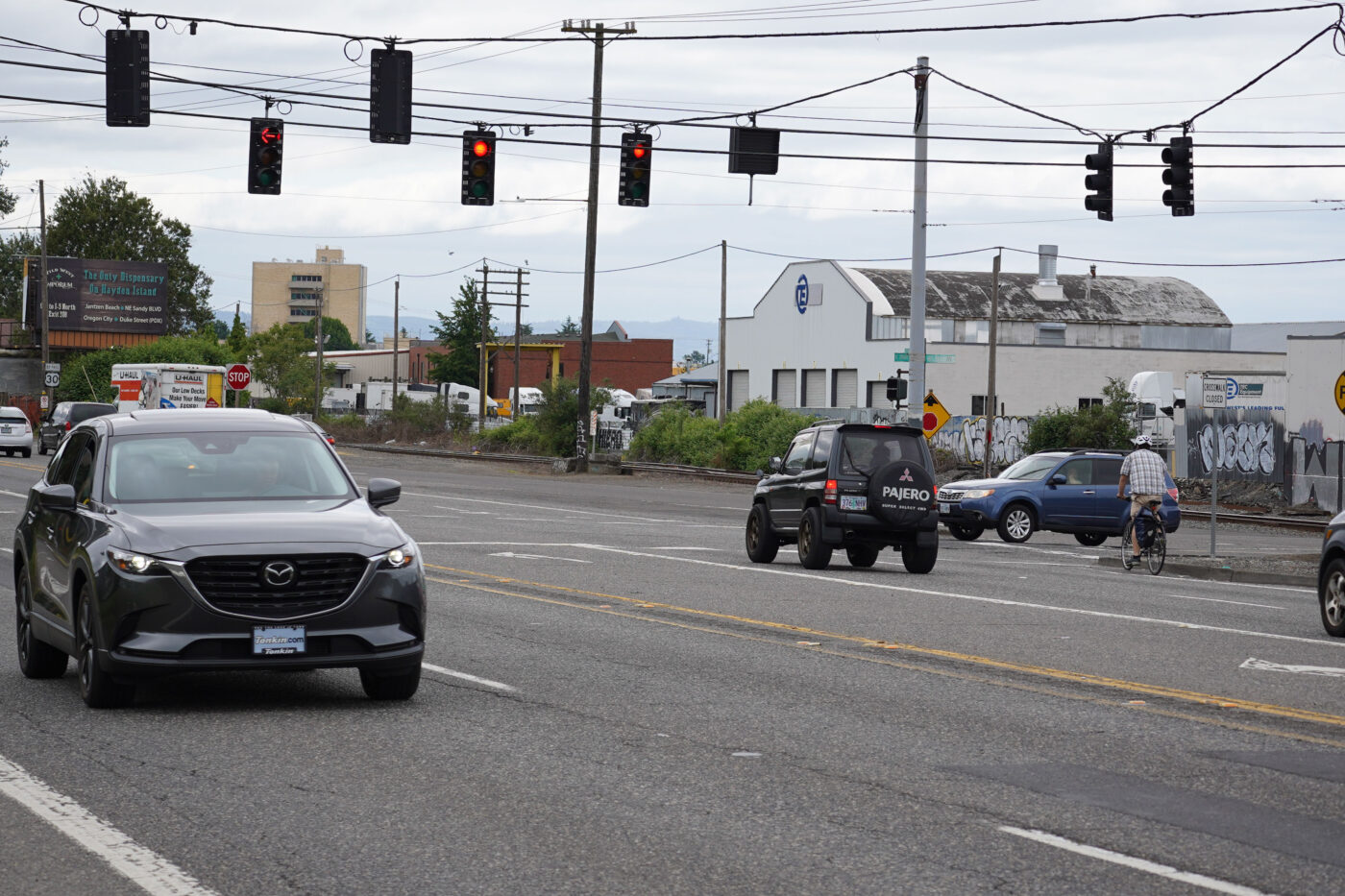

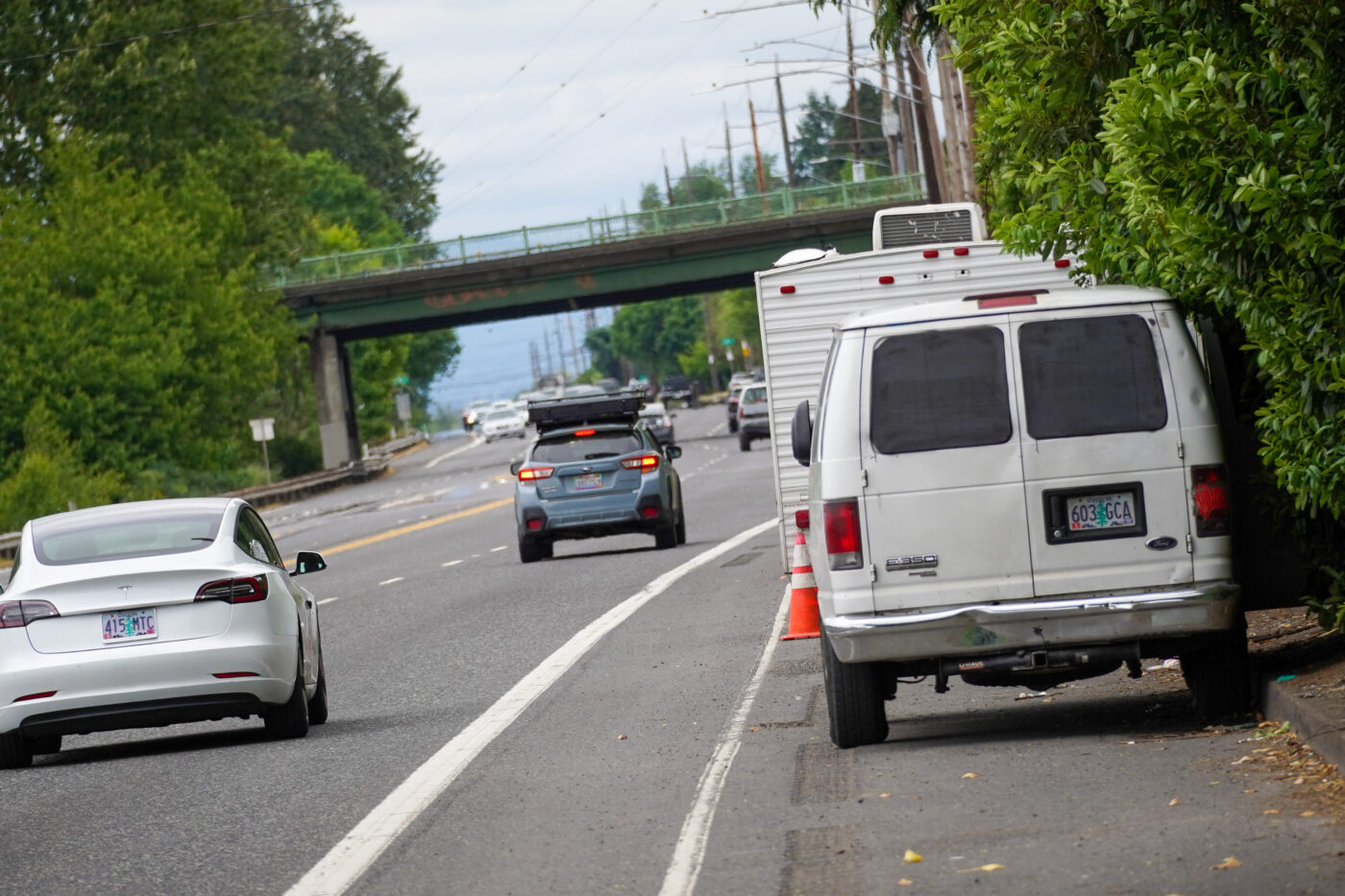

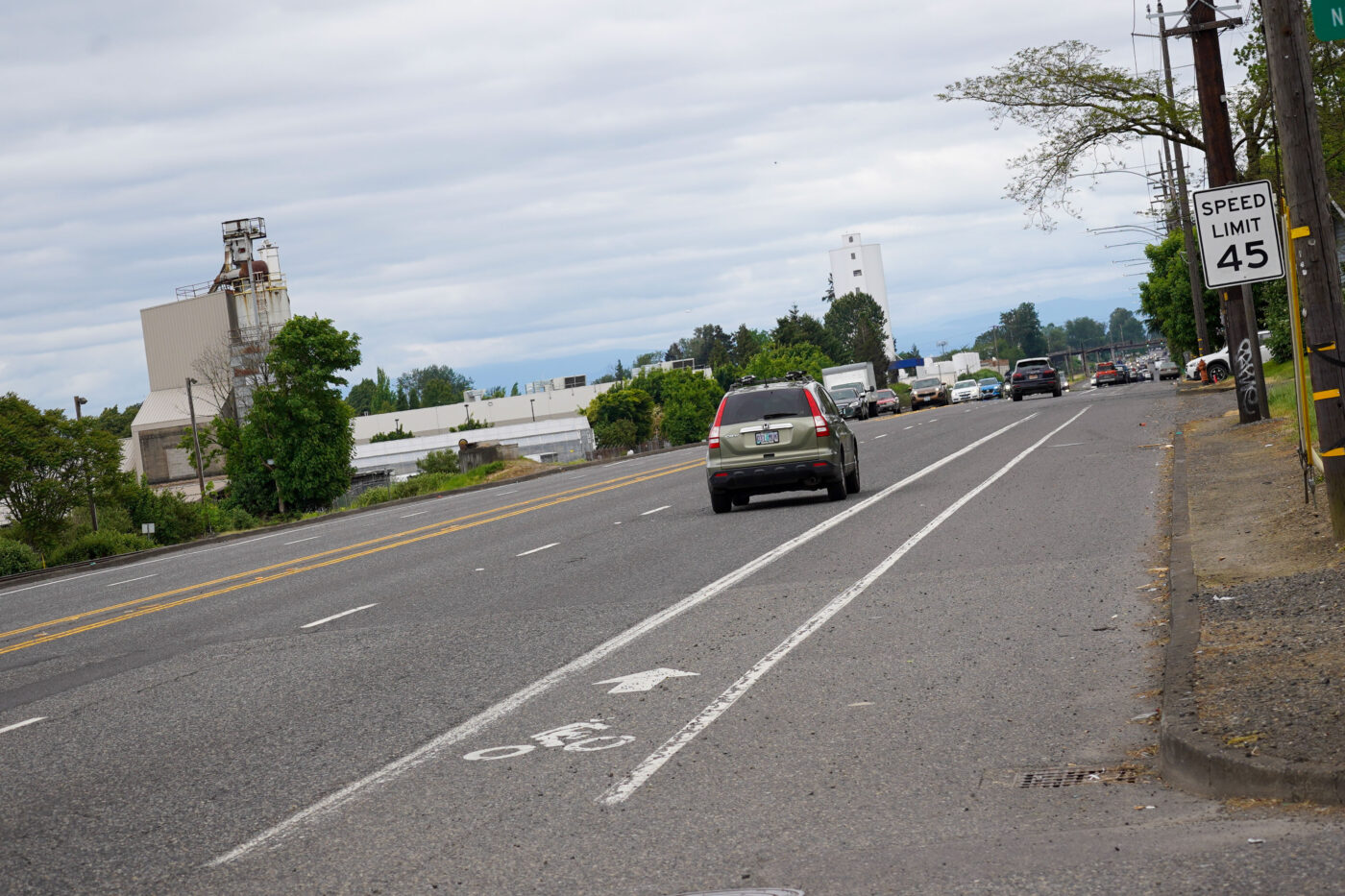
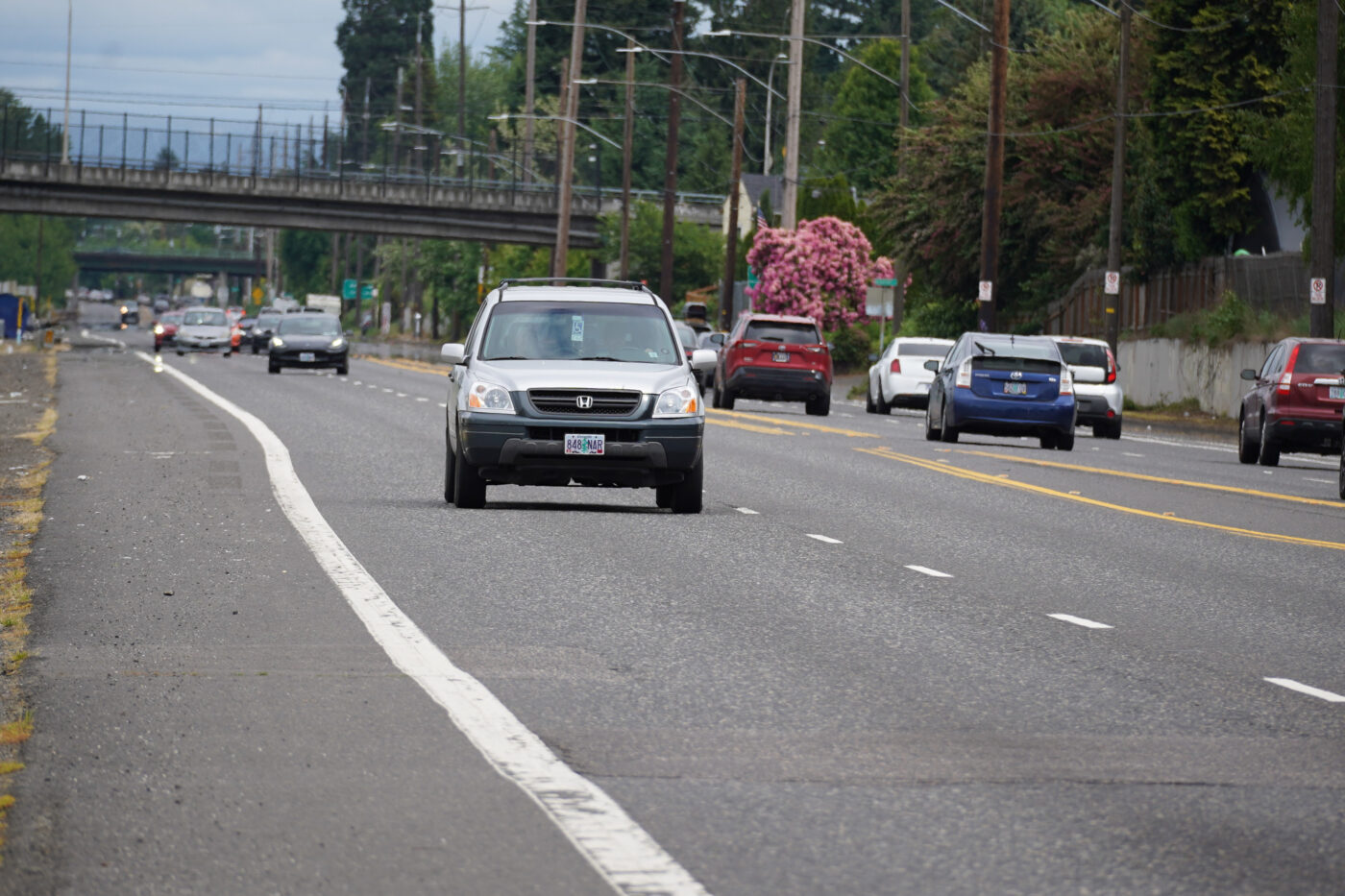
There’s no reason it has to be this way. We are just choosing to live with an outdated design that fails on almost every measure we say we care about: It’s a car sewer that’s unsafe for all users, it doesn’t have adequate biking or walking infrastructure, and there is no bus rapid transit or light rail. And it should be noted that there’s another stroad — NE Columbia Blvd — just a few hundred feet away. Drivers get redundancy, bike riders get scarcity. Is it any wonder more people don’t ride in this city?
Can you imagine an excellent bike lane on this street? You’d have a fast and direct connection between the Woodlawn and Cully neighborhoods. You could also connect to existing bike routes and bridges on NE 33rd and 42nd. Industrial workers at the Portland Airport and the hundreds of other business in the Columbia Corridor would have a more viable alternative to driving. Getting to Cully Park at 72nd would suddenly be feasible for many more people. It would help spur vibrancy at the new Las Adelitas residential development. If we were able to update the design all the way to 82nd, you could hop on an e-bike and go from north to east Portland in less than 15 minutes. It could be Portland’s first bike highway.
Heck, the north side of the street doesn’t even have any homes, cross-traffic or driveways! We could plop down a few hundred jersey barriers tomorrow and protect the bike lane!
Yes I realize there’s the neighborhood greenway on NE Holman and Simpson, but that’s not good enough. The Holman route gets broken up by Fernhill Park (at NE 37th) and you have to navigate your way to NE Simpson to stay on the greenway. It also has speed bumps and very poor pavement quality in many spots. The biggest reason I’m not a fan of Holman is because it’s hidden. As even the City of Portland’s own bicycle coordinator for the past 30 or so years has stated, these hidden bikeways are likely a major reason why more people are not riding bikes in Portland.
The simple fact is that we must make bikeways more visible if we want more people to pay attention to it. And there’s not better way to make biking visible than to put bike-specific infrastructure on streets where a lot of people drive.
And let’s not forget Martin Greenough. Martin was 38 years old, lived near Lombard and Cully Blvd and had just gotten a new job north of Columbia near MLK Jr. Blvd. He had only lived in Portland for two weeks and wanted to bike to work and realized Lombard was the quickest way to do it. He opened a city bike map and saw that Lombard had bike lanes, and he went for it. Then on the night of December 12th, he was riding on Lombard near 42nd and was struck by a drunk driver and killed. If we had physically separated bike lanes (instead of a gap like where he got killed!), Martin might still be alive today.
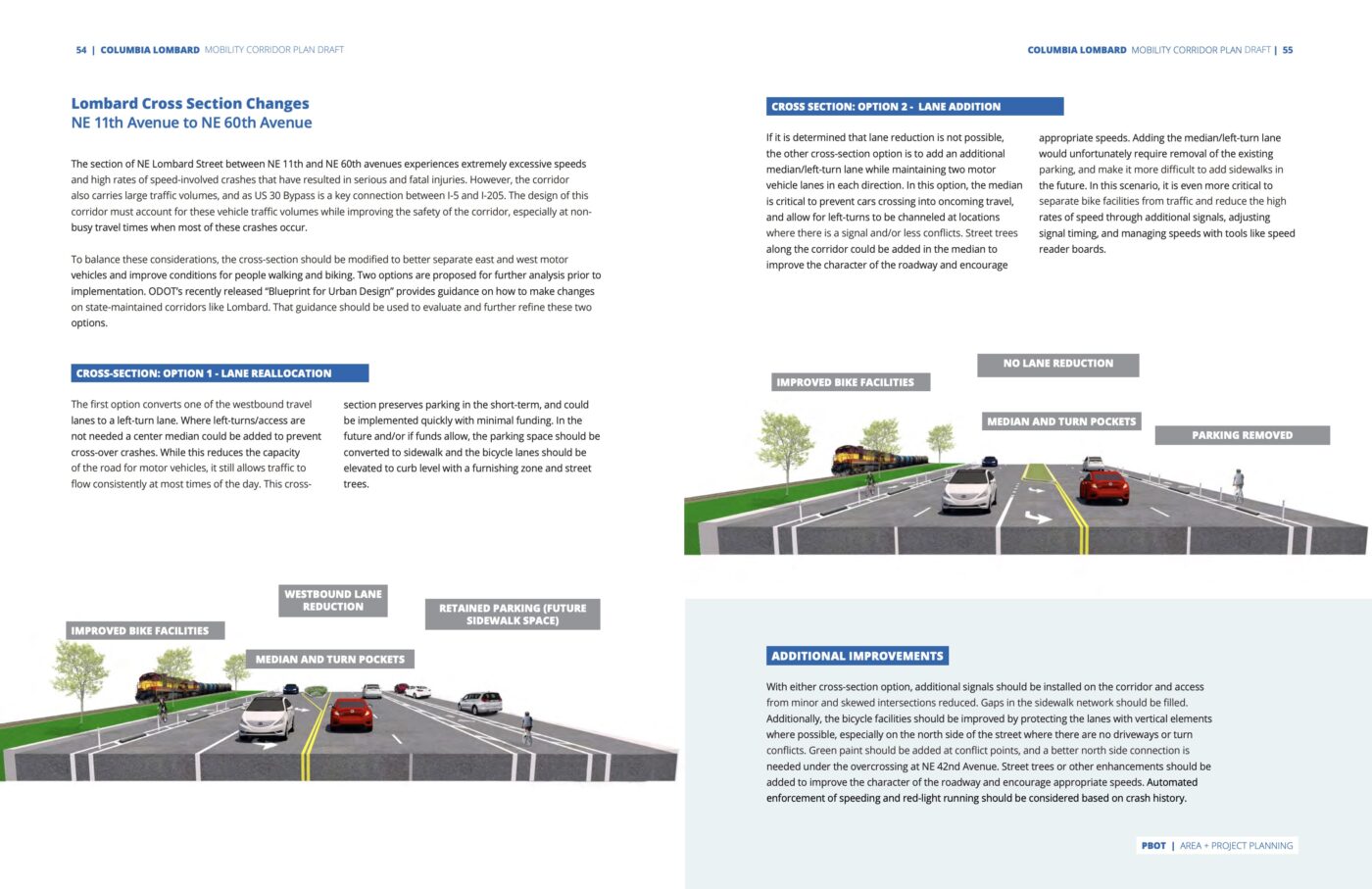
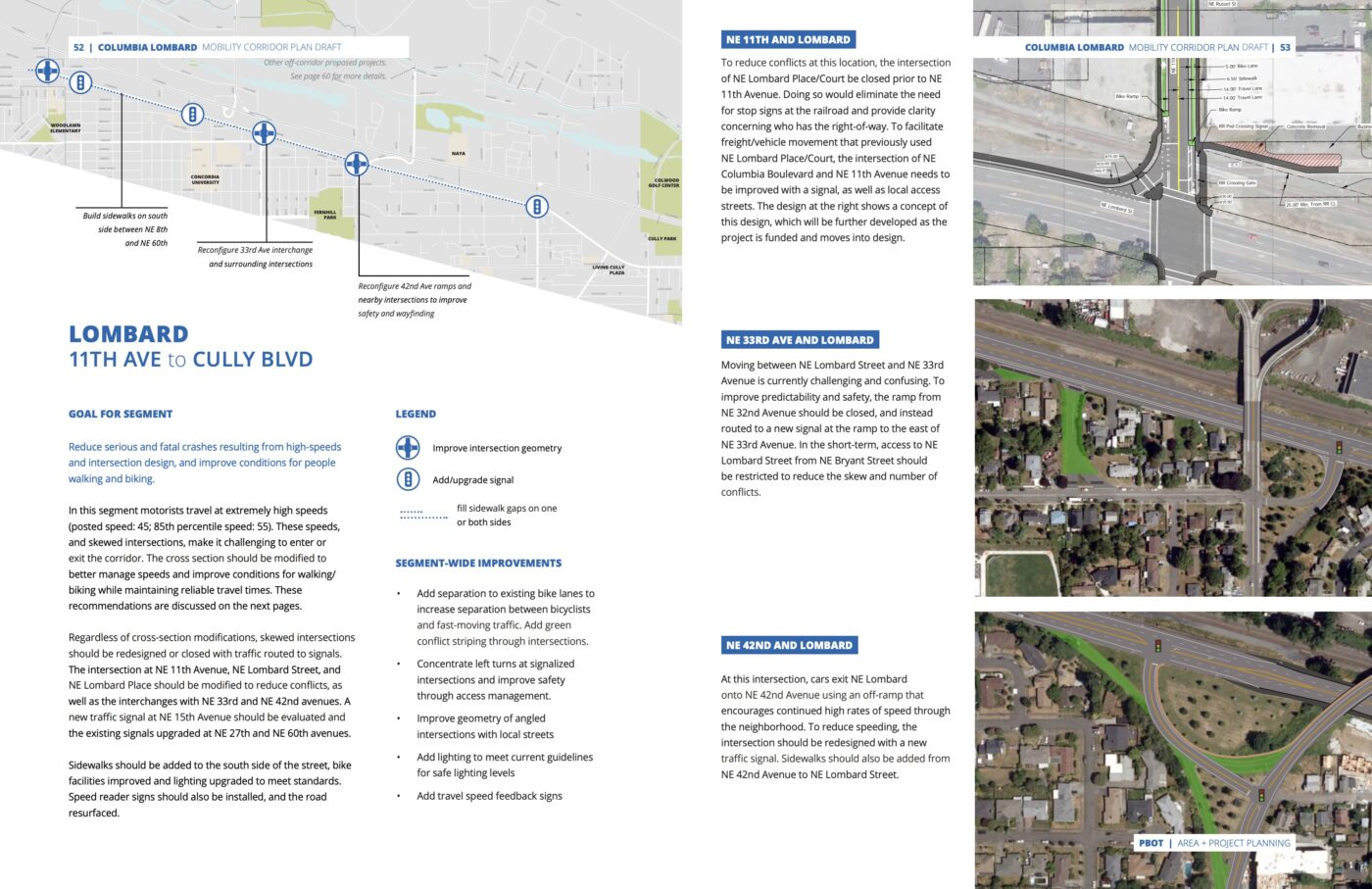
Lest you think I’m some radical for this idea, consider that the Portland Bureau of Transportation has already put some serious thought into it. Their Columbia Lombard Mobility Corridor Plan that was passed in 2021 had some specific ideas for how to improve this stretch of Lombard (see pages from the plan above). On this segment they recommended we, “add separation to existing bike lanes to increase separation between bicyclists and fast-moving traffic.” The plan also called for closing a ramp at NE 32nd and reconfiguring the dangerous intersections at 33rd and 42nd. While PBOT’s plan was disappointingly timid (they were too afraid to suggest anything that might decrease car capacity) at least they recommended removing the parking lane to make room for wider bike lanes and a future sidewalk and/or raised bike lane. In one of their recommended options that keeps the parking lane, they were suggested removal of one driving lane westbound to make more cycling space.
So we’ve got the space, the rationale, and the plan. Now let’s find some political will and make something happen. There’s so much we should do on this stretch of Lombard! What we shouldn’t do is settle for what we have.

